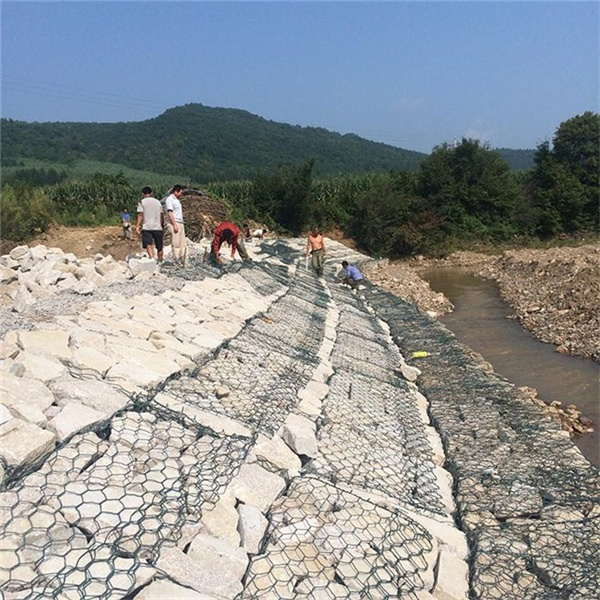Сеп . 21, 2024 18:49 Back to list
gabion basket retaining wall
Gabion Basket Retaining Walls An Effective Solution for Erosion Control
In the realm of civil engineering and landscape architecture, retaining walls are essential structures that serve to prevent soil erosion, manage drainage, and provide necessary support for sloped landscapes. Among the various types of retaining walls, gabion basket retaining walls have gained popularity due to their versatility, durability, and aesthetic appeal.
A gabion basket is a cage or box filled with rocks, stones, or other materials, designed to provide structural support while allowing water to pass through. The term gabion originates from the Italian word gabbione, which translates to big cage. These structures can be used in a variety of applications, from stabilizing steep slopes to creating decorative garden features.
One of the primary advantages of gabion basket retaining walls is their ability to manage water efficiently. The gaps between the stones in the baskets allow for proper drainage, minimizing the hydrostatic pressure that often leads to the failure of solid retaining walls. As a result, gabion walls not only preserve the integrity of the surrounding soil but also contribute to sustainable water management practices.
Moreover, gabion baskets are relatively easy to install. Construction begins by laying a solid foundation and placing the gabion baskets in a staggered configuration, which enhances stability. Once positioned, the baskets are filled with stones, which can vary widely in size, shape, and color to achieve the desired aesthetic effect. This modular approach allows for flexibility in design, enabling landscape architects to create walls that blend seamlessly with their surroundings.
gabion basket retaining wall

In addition to their functional benefits, gabion basket retaining walls offer significant environmental advantages. The use of locally sourced stone reduces transportation costs and carbon footprints, promoting sustainability. Furthermore, these walls can support vegetation growth, as the porous nature of the materials facilitates soil retention. Over time, plants can establish roots in the gaps between stones, further enhancing the stability of the wall and promoting biodiversity in the area.
From an aesthetic standpoint, gabion walls provide an organic look that can enhance the visual appeal of any landscape. They can be used to create rustic garden features, terraces, or seating areas, effectively combining functionality with beauty. The natural stone finish often complements rural and urban settings, offering diverse design possibilities.
However, it is important to note that while gabion basket retaining walls are durable, they require proper installation and regular maintenance to ensure their longevity. Over time, stones may shift or settle, necessitating inspection and possible reinforcement. Ensuring that drainage systems remain unobstructed is also crucial to maintaining the effectiveness of the wall.
In conclusion, gabion basket retaining walls represent a practical and attractive solution for erosion control and landscape stabilization. Their ability to manage water, ease of installation, environmental benefits, and aesthetic versatility make them an ideal choice for both residential and commercial projects. As we continue to seek sustainable building practices, gabion walls are likely to play an increasingly significant role in contemporary landscaping and engineering.
-
Why PVC Coated Gabion Mattress Is the Best Solution for Long-Term Erosion Control
NewsMay.23,2025
-
Gabion Wire Mesh: The Reinforced Solution for Modern Construction and Landscape Design
NewsMay.23,2025
-
Gabion Wall: The Flexible, Seismic-Resistant Solution for Modern Landscaping and Construction
NewsMay.23,2025
-
Gabion Wall Solutions: The Durable, Decorative, and Affordable Choice for Every Landscape
NewsMay.23,2025
-
Gabion Basket: The Durable and Flexible Alternative to Traditional Retaining Walls
NewsMay.23,2025
-
Gabion Basket: The Proven Solution for Slope Stability and Flood Control
NewsMay.23,2025
-
Versatility of Chain Link Fence Gabion
NewsMay.13,2025






